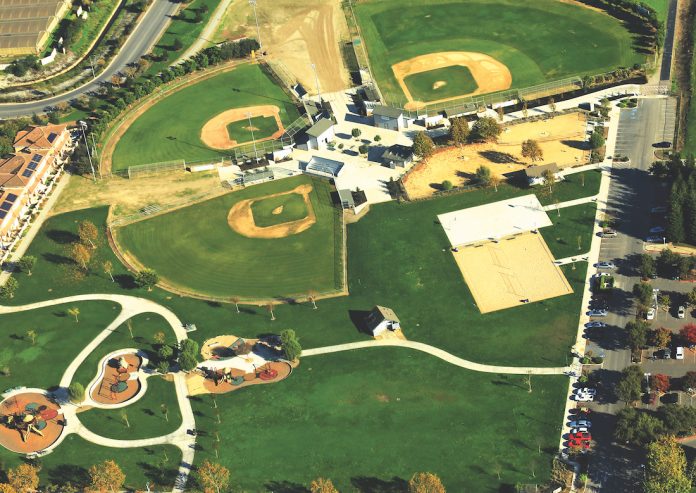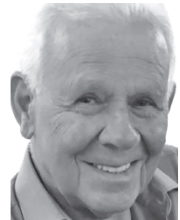[This is part one of a two-part series. Part two runs next week. — Editor]
WATSONVILLE—As a lifelong Watsonville resident, Carlos Campos says he knows how hard it is to find an open park close to home where one can play soccer. Finding park space to enjoy a weekend get together with family and friends might be even harder, Campos says.
His longtime presumptions inspired his documentary “Field of Dreams-Campos de Sueños,” which examines the lack of recreational soccer fields in Watsonville and the impact that vacuum has had on the city. While filming, Campos says his beliefs about the city’s park space deficiencies were solidified.
The National Recreation Association standard for park space in a city is 10 acres of parkland per 1,000 residents. But Watsonville boasts only 2.25 acres of parkland per 1,000 residents, says Parks and Community Services Department Director Nick Calubaquib. The city website says Watsonville has about 143 acres across its 26 parks. In comparison, neighboring Santa Cruz has more than 1,700 acres of park space for its roughly 64,500 residents—Watsonville has about 10,000 fewer residents than the coastal tourism hub.
“When I learned that, I was like ‘dang, we’re really suffering for park spaces,’” Campos said.
Calubaquib says the discrepancies between the county’s two largest cities is not an issue unique to Santa Cruz County. Researchers for years have found that those inequalities have fallen along racial, ethic and socioeconomic lines, Calubaquib says. More affluent communities have traditionally prospered, and low-income communities with large minority populations have seen little investment in their parks.
“As you track Watsonville and Santa Cruz racially, socioeconomically and the amount of park space that’s available there versus here…I think it’s another telling way of how those resources have been unequally distributed,” he said. “What’s great about where we are today is that there’s a lot more awareness of that.”
City limits
Watsonville is strapped for space with its roughly 53,000 residents living in a little more than 6 square miles.
More than a decade ago city leadership devised a Parks and Recreation Master Plan, a blueprint for officials to follow while expanding and upgrading Watsonville’s parks and recreation programs. Along with raising the city’s park acreage to at least 5 acres per 1,000 residents, the plan also identified two areas that at the time were thought to be ideal for future park spaces: Atkinson Lane and Buena Vista. Those areas, however, still sit vacant today—one location was instead used for proposed housing and the other was nixed by land use restrictions.
Next year, area officials will reassess Measure U, a 2002 voter-approved initiative that restricted the city’s annexation power to protect surrounding agricultural land, including the areas west of Highway 1. It is unlikely that Watsonville will add a sizable amount of land to its current footprint.
That means city leaders will once again have to look within to address their park deficiencies, Calubaquib says.
The city has identified a few spots in which future parks could be constructed, but Calubaquib could not list the exact locations. He also says that there is no guarantee that those locations would indeed be used for park space, as other issues such as the housing crisis have taken priority over park creation.
“The pickings are kind of slim,” he said.
And the funding is just as thin.
Traditionally operating on a small budget for a community of its size, Watsonville has for years struggled to bring in enough revenue to expand its recreation options, let alone properly upkeep its current parks. Its 2020 Parks and Recreation Strategic Plan identified more than $18 million in needed repairs to various parks and facilities.
Calubaquib’s department receives roughly $250,000 annually from the general fund to make capital improvements to its buildings and parks, and it also receives funds from fees assessed to developers and businesses owners that can be used for larger renovation projects and to create new parks. He says there is about $1 million sitting in that fund, but added that it took 5-10 years to build that reserve because of the slow rate of development and business growth in Watsonville. That amount of money, Calubaquib says, is nowhere near enough to purchase land and build a new park from scratch.
“When we’re talking about acquiring land, and then on top of that, building something, it puts most projects out of our range,” he said.
Measure Y, a 2020 voter-approved half-cent sales tax, was pitched as another way to help the department improve its parks and provide safe spaces for young people. However, the 8% split the department receives—estimated at $320,000 a year, pre-pandemic—is not expected to make a sizable dent in the park funding woes.
The department is mostly reliant on grants for large-scale projects, which means many of those plans have often taken years to begin or have yet to break ground. The planned revitalization to the City Plaza, for instance, has yet to begin despite receiving City Council approval because the city has missed out on Proposition 68 funding.
Calubaquib says the department will continue to rely on grants unless the city sets up other funding streams for the department. The aforementioned Strategic Plan listed a handful of options to increase funding, including increasing the fees for the city’s recreation programs, upping the impact fees on developers and businesses and sending another tax measure to voters.
The City Council at a recent meeting approved $80,000 to research more sustainable funding sources for parks and arts programs. The city is also expecting to receive $18.8 million in funding from the American Rescue Plan (ARP), a $1.9 trillion stimulus package approved by national lawmakers.
It is not yet clear how that money can be used, though Calubaquib said the hope is that some of that cash will go toward a planned rebuild of Ramsay Park’s soccer fields. That project and the plan of how to spend the funds from the ARP are expected to be part of the City Council’s two-year budget hearings this summer.
Although the pandemic has wreaked economic havoc in Watsonville, Calubaquib says that in some ways it has been a shot in the arm for his department. With shops, theaters and restaurants closed down, more residents turned to parks to relieve stress and recreate. He says that in his two decades of working in the field he has not seen community support for parks and recreation reach current levels.
“I feel like the support is definitely there,” he said.
So does Watsonville City Councilman Francisco “Paco” Estrada, who last year voted against a proposed budget after about two dozen people called for cuts to police spending and more investment in youth programs.
That vote and his suggestion in the same meeting that Measure Y could be repealed and replaced caught some by surprise, as Estrada served as the Measure Y committee co-chair and was one of the top supporters of the tax. Looking back, he says he regrets not making the Parks and Community Services Department’s share larger.
“When you brought up that parks were included in Measure Y, that was the hook for a lot of people and the thing that allowed us to talk about the future of Watsonville—the Watsonville that we envision together,” he said. “A lot of time [those futures included] a lot of green space, more parks and more soccer fields.”
Estrada said if the “timing was right” he would support another similar tax measure that would be wholly dedicated to parks and social services. He’s not the only one. A recent citywide survey found that a majority of residents (61.4%) would support paying another tax to expand the city’s recreation programs, parks and open spaces.
He also believes that the city can make a dent in its park deficiencies by repurposing some underutilized existing areas. The tennis courts at Callaghan Park, for example, could be turned into courts for futsal—a slimmed down version of soccer on a hard surface.
“I feel like those are low-cost solutions and something that the community would definitely appreciate,” he said. “I know that we don’t have the space and we have all these other obstacles to overcome, but I feel like if we got creative we could do so much not only for soccer players but for everyone.”










